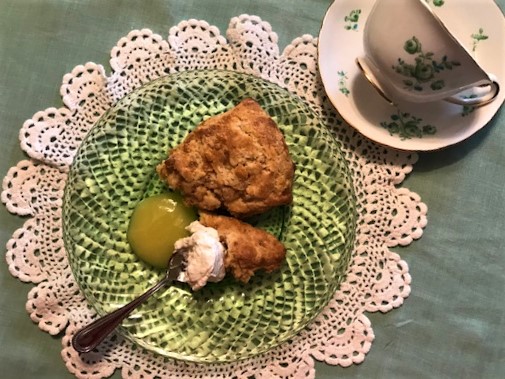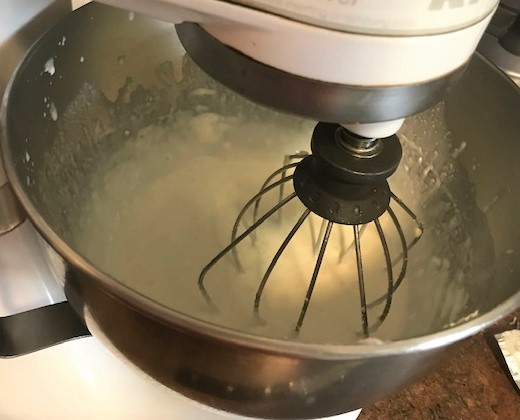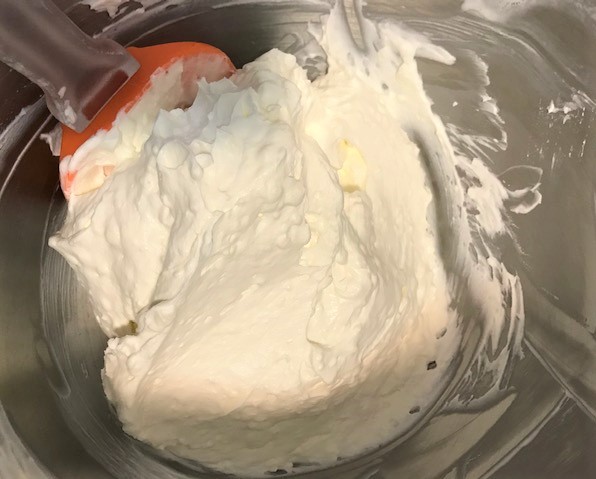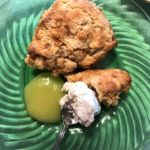What goes best with a fresh warm scone? In my experience, Devonshire Cream and Lemon Curd. Its traditional and delicious. But what is Devonshire Cream? In short, its a creamy spread that has been topping scones for centuries. Along with a curd or jam, cream is a must for your scone and Devonshire Cream is my choice.
Some Background
Traditionally, any tea enthusiast will tell you that your scone needs to have cream. As early as the 11th century, there is documentation that the monks in Devon England would eat bread with cream and jam. They began serving this to workers and ultimately to other people as what is known today as a Devonshire Cream Tea. Since then, the practice of eating scones with cream and jam has continued. That’s just a snippet of its beginnings.
But what about the cream? Clotted cream originated in Southwest England, either in Cornwall or Devon, depending on who you ask. There are essentially 3 types of creams that have classically been served with scones – Clotted Cream, Devonshire Cream, and Double Cream.
- Clotted Cream – A silky, golden-yellow cream made by allowing unpasteurized cow’s milk (traditionally from Jersey cows) to sit for 12-24 hours in shallow pans, then slowing heating it and leaving it to cool for another 12-24 hours. The cream that rises to the surface and “clots” is skimmed off and served with scones, berries, or desserts. Clotted cream has a minimum of 55% butterfat.
- Devonshire Cream – Clotted cream produced in the county of Devon, England. Interestingly, in Devon, cream is traditionally spread first on a scone, then topped with jam. In Cornwall, it’s the opposite: jam first, then cream.
- Double Cream – A dense cream skimmed from the surface of milk. With a butterfat content of 48%, it is much more decadent than whipped cream but slightly lower than clotted cream.
In the United States, we can obtain clotted cream and Double Cream in import shops, specialty stores or we can attempt to make our own. For me, I have used what some would call a mock Devonshire Cream. For me, its easier than finding unpasturized milk. It has been what I have served for years and have had at several tea rooms around the United States. Sometimes controversial for the purest, this cream presents a reasonable option that provides a delicious spread for your scones. So here’s how you make it!
Ingredients
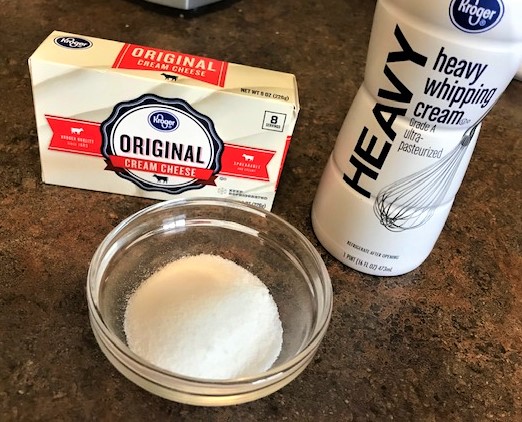
Devonshire Cream is very easy to put together and has very simple ingredients. Heavy whipping cream, cream cheese, and sugar. That’s it. Some recipes have variations – addition of sour cream, vanilla or salt, but I prefer this recipe.
Putting it together
You will need 3 ounces of cream cheese. This needs to be at room temperature. This is critical, so take it out of the refrigerator and make sure its getting soft. If not completely softened, your Devonshire Cream will be lumpy.
Next, your mixing bowl and whisk need to be very cold. So put them in the freezer while you are waiting for the cream cheese to come to room temperature.
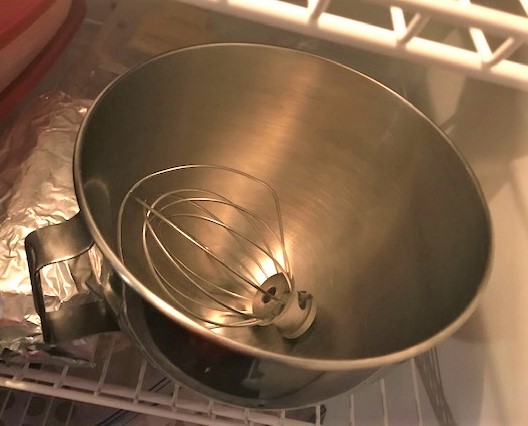
Measure out 1 cup of cream. This also needs to be well chilled. And finally, measure out 1 tbsp of white sugar.
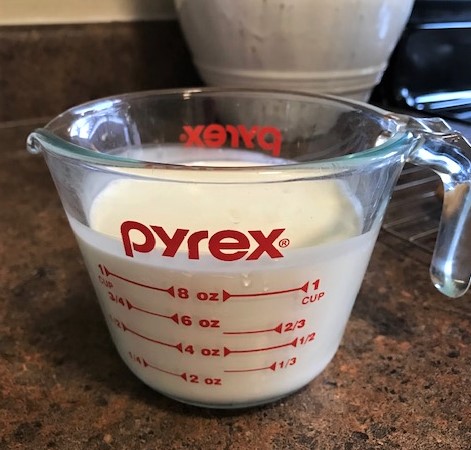
First, place your cream cheese in your mixing bowl and whip until fully smooth. Next, pour in your chilled cream and whip until fully incorporated with the cream cheese. Add the sugar and continue to whip until stiff peaks are formed, almost close to butter.
Once finished, store the Devonshire Cream in the refrigerator for up to one week. It can be frozen – just bring to room temperature and stir to make sure its smooth.
This Devonshire Cream is not overly sweet. When paired with either jam or curd, the slightly tangy cream cheese brings out the flavor of any other topping. If you prefer a sweeter version, just add more sugar as you are whipping the cream. Some recipes will call for powdered sugar rather than white sugar.
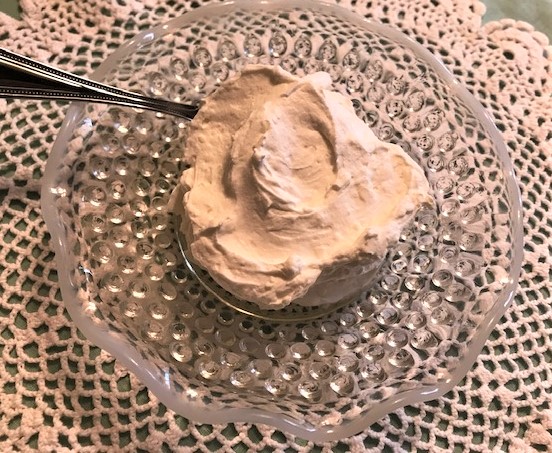
How to use your cream
There are several things you can do with your Devonshire Cream.
If serving for an afternoon tea party, scoop several servings into a dish for your guests to enjoy with their scones. Does the cream go first or does the curd or jam go first? Though it doesn’t seem like a critical issue, if you are from Devon, the cream traditionally goes on the top followed by the jam or the curd. If you are from Cornwell, its jam or curd first, followed by the cream. For me? I don’t think I have a preference – just give me a nice scone and include some cream and curd….throw in a cup of tea and I am happy!
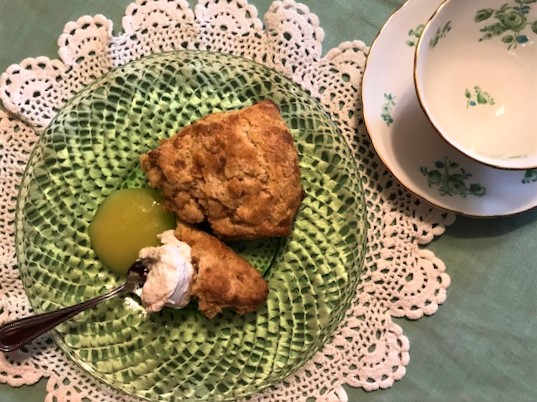
Devonshire Cream is great with delicious quick breads such as my Whole Wheat Pumpkin Bread. You can also use it as a fruit dip. Or as a filling to a cake or even a pavlova. And if you asked my afternoon tea guests, they like to just have a spoonful!
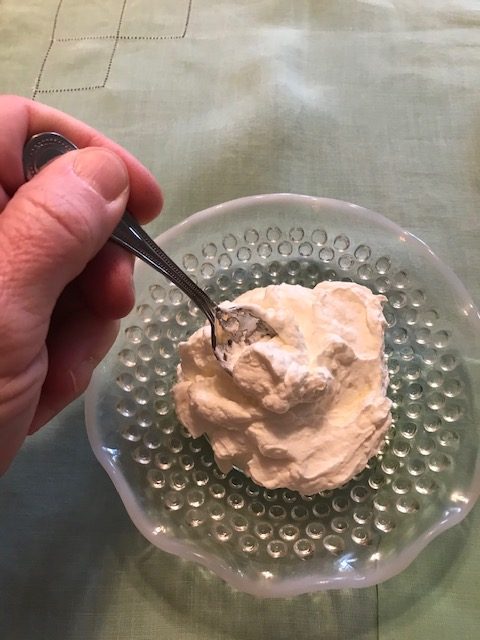
However you enjoy your Devonshire Cream, it makes your tea and scones complete.
The following products were used in the making of this recipe.
This post contains affiliate links and I may earn compensation when you click on the links at no additional cost to you Look through the products and enjoy!
Historical information was obtained from the following sources: https://en.wikipedia.org/wiki/Clotted_cream , https://ancientfoods.wordpress.com/2012/12/14/devonshire-clotted-cream-a-bit-of-history/, https://www.thekitchn.com/whats-the-difference-clotted-c-87144
Devonshire Cream
Ingredients
- 3 ounce cream cheese Must be at room temperature
- 1 tbsp white sugar
- 1 cup heavy cream
- 1 pinch salt
Instructions
- In a mixer bowl, whip the room temperature cream cheese
- Add sugar and salt
- Beat in whipped cream until stiff peaks form
- Chill until serving
References for this article:
- Whats the difference in clotted cream? https://www.thekitchn.com/whats-the-difference-clotted-c-87144
- Clotted Cream https://en.wikipedia.org/wiki/Clotted_cream
- Devonshire Clotted Cream – A bit of history https://ancientfoods.wordpress.com/2012/12/14/devonshire-clotted-cream-a-bit-of-history/
